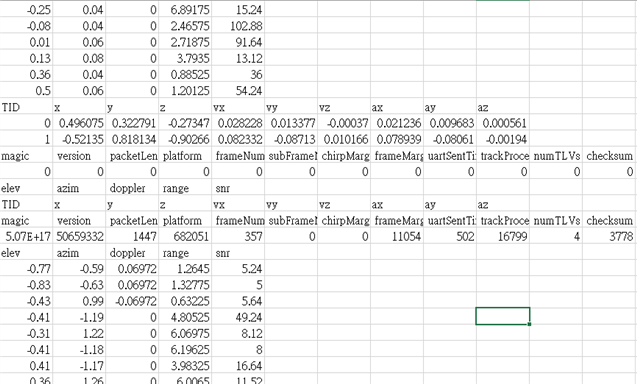Other Parts Discussed in Thread: AWR6843AOP
Hi, TI team,
I'm using AWR6843AoP EVM to run the 3D people counting lab in mmwave_industrial_toolbox_4_11_0. And I have successfully run the lab and see point cloud data shown on GUI.
But I can't save the point cloud output.
According to the "People Counting Visualizer User's Guide", I have installed python 3.6, and also checked the "self.saveBinary" parameter in "oob_parser.py", which was already set to 1.

It should write out a .bin file in binData folder, but I cannot find any one.

Are there anything wrong or misunderstanding of the setting? Please give me a guidance.
Thank you.
Shihyu.


